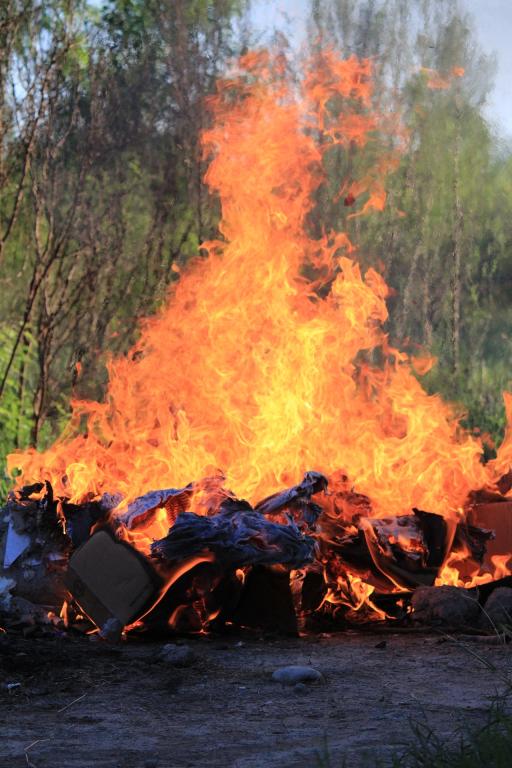 When Jesus talked about hell, he used the Hebrew or Aramaic equivalent of the Greek word “Gehenna.” This is a literal valley south of Jerusalem that has a long, storied, and ominous history for the Jews. In sixth-century BCE, it became the place where their dead bodies were tossed into after the Babylonians destroyed Jerusalem. Before that, it was a locale where worshippers of Baal sacrificed and burned children to honor the god Molech (see Jer. 7:31–32; 35:35). What’s interesting about this place is that the prophet Jeremiah writes how the Israelite God never desired for people to “pass through the fire” there. In fact, the calls it an abomination (Jer. 32:35). Regarding the delicious irony of this, my friend and scholar Brad Jersak points out the following:
When Jesus talked about hell, he used the Hebrew or Aramaic equivalent of the Greek word “Gehenna.” This is a literal valley south of Jerusalem that has a long, storied, and ominous history for the Jews. In sixth-century BCE, it became the place where their dead bodies were tossed into after the Babylonians destroyed Jerusalem. Before that, it was a locale where worshippers of Baal sacrificed and burned children to honor the god Molech (see Jer. 7:31–32; 35:35). What’s interesting about this place is that the prophet Jeremiah writes how the Israelite God never desired for people to “pass through the fire” there. In fact, the calls it an abomination (Jer. 32:35). Regarding the delicious irony of this, my friend and scholar Brad Jersak points out the following:
We ought to [ . . .] note the irony and incongruence of the Church utilizing the very place where God became violently offended by the literal burning of children as our primary metaphor for a final and eternal burning of God’s wayward people in literal flames. Thus, God becomes the very Molech who decrees that the angels must deliver his children to the flames, even though this was the very reason he ordered Hinnom to be deserted in the first place!
Fast forward to Jesus’ day and Gehenna is still an abominable place. Some suggest it was merely a trash dump, where all manners of refuse burned perpetually. Metaphorically, however, the picture of Gehenna as a place of correction or purification occurs frequently in rabbinic sources (See Mishnah Kiddushin 4.14; Avot 1.5, 5.19, 20; Tosefta Berachot 6.15; Babylonian Talmud Rosh Hashanah 16b: 7a, Berachot 28b). In essence, for many in this tradition, it’s similar to the Catholic doctrine of purgatory—the wicked suffer until their sins are purified and purged from them. Again, though, it was pretty much agreed upon that the maximum sentence was one year—a long time but not time-everlasting.
So, what did Jesus mean when he used the word? It’s hard to be absolutely certain, but we can be pretty sure it wasn’t what the infernalists (proponents of eternal conscious torment) would have you believe. There is ample evidence that he indeed used Gehenna as a stark warning against sin and unrighteousness, sure, but typically it’s in the context of the type of hell that was literally going to befall his people in just a few decades. That is to say, he used it as a way to shock and warn his people about the destruction that would befall them at the hands of Rome (just as Jeremiah warned his people over 600 years prior).
When he did use fiery, hellish language to describe the afterlife though, it’s difficult to say what he meant exactly. As David Bentley Hart so aptly points out:
Talk of Gehenna was part of the common religious parlance of the Jewish world before, during, and soon after the time of Jesus, but how it was interpreted by the differing schools of theology is almost impossible to reduce to a single formula or concept. Clearly it was understood sometimes as a place of final destruction, sometimes simply as a place of punishment, and sometimes as a place of purgatorial regeneration.
If you open your Bibles, it should be fairly clear that it’s not really clear. In some places, Jesus seems to make the case that for some, there will simply be no way to avoid utter destruction. If you believe that Jesus is talking about God in Matthew 10:28, then you could conclude that God has the power to destroy both body and soul in Gehenna. There are also a few depictions of branches being cut off and fig trees being withered by Jesus all throughout the gospels. This seems to point to the fact that, according to Jesus, some won’t “pass through the fire” to the proverbial “other side.” In other places, however, there seems to be more redemptive picture being painted. In Mark 9, for example, after Jesus gives his listeners all those wonderfully hyperbolic self-mutilation images, he concludes the teaching by saying how, “everyone will be salted with fire” (Mark 9:49—emphasis mine). What is the salt and fire for, exactly? Anyone who has ever worked with meat knows it’s used for preserving. The salt/fire imagery here is, just as Jesus explicitly states, good (Mark 9:50).
At the end of the day, with regards to Gehenna and its proper meaning, we can be sure of exactly one thing: that we can’t be sure how to properly interpret it. We can have our thoughts, our beliefs, our best educated guesses, but we cannot be certain. And so, no matter what we believe about the afterlife and the fate of, well, all of us, we’ll have to turn our attention elsewhere.
For more on this topic, please see my article The Absurdity of Hell, as well as my forthcoming book, “Apostate!”
If you wanna get to know me better, please follow me on social media. I’m pretty active on all platforms:
Also, if you’ve been digging my work on here, and want to see me be able to continue writing as close to full-time as humanly possible, please take a look at my Patreon page at www.patreon.com/mjdistefano. Even $1 a month helps bigly!!!














